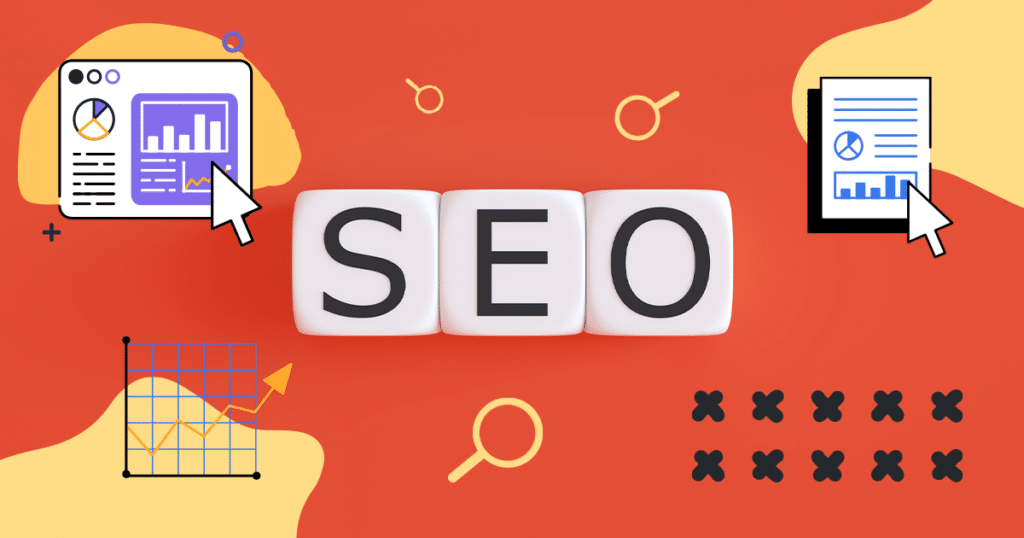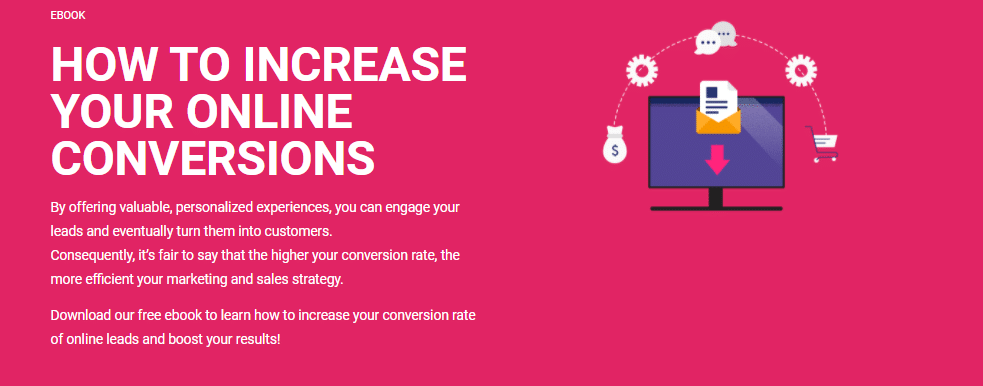SEO for SaaS is a strategy using Content Marketing to drive traffic to a Software as a Service (SaaS) company’s website.
Understanding how search engines and keywords work will help you develop an effective Content Marketing and SEO strategy to drive leads to your SaaS website.
This article will explore why SEO is essential for SaaS.
- The Anti-Software Company
- What Is the Big Deal About SaaS
- Why SaaS Companies Should Invest in SEO
- What Makes SEO for SaaS Different
- 10 Steps to Create a Successful SaaS SEO Campaign
- Wrap Up
The Anti-Software Company
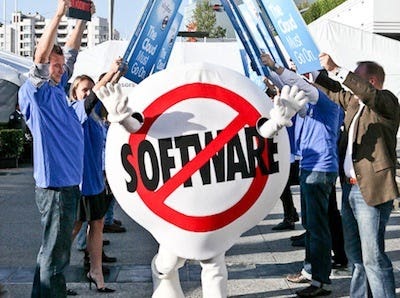
Over twenty years ago, Salesforce.com, a San Francisco-based start-up, disrupted the conference held by a large enterprise software company and essentially launched the Software as a Service (SaaS) revolution.
SaaS companies now dominate the marketing and sales technology industry and continue to grow.
What Is the Big Deal About SaaS
For one, SaaS transformed software delivery. Companies didn’t need to spend millions on complicated software and hardware. Maintenance contracts disappeared.
Delivering internet-based software as a subscription included upgrades and maintenance, driving the cost of computing down, so millions of people could access the same software enterprises used.
Why SaaS Companies Should Invest in SEO
Investing in performance advertising often backfires as SaaS companies burn through investment cash before the business scales.
SEO and Content Marketing don’t require as much investment as performance advertising, so the cost is much lower. However, it takes time and well-thought-out strategies to build successful SEO campaigns.
What Makes SEO for SaaS Different
Retail businesses focus on products and brands to drive traffic to their website. Healthcare companies may focus on specific diseases or ailments their patients may encounter. However, SaaS companies that are starting up don’t have a popular brand or product to use to drive traffic to their site.
SaaS businesses must develop keyword strategies that focus on the problems buyers need to solve.
“Generate more leads without advertising” may be a keyword phrase SEO SaaS vendors use to drive traffic to their websites.
These long-tail keywords generate less traffic but are also less competitive. Building a library of these phrases will improve search results in the long run.
10 Steps to Create a Successful SaaS SEO Campaign
1. Set Realistic Goals
Creating realistic goals is the crucial first step for building a successful SEO campaign. Goals should be measurable and attainable.
For instance, if you create your first SEO campaign, setting a goal to appear in the number one slot on a Google search result within the first month is not an attainable goal.
SEO and Content Marketing need time to develop traction, and goals should reflect that reality. A more realistic example is placing three keyword phrases in the top 10 within six months.
2. Identify the KPIs
Once you set your goals, you need a way to measure results. Key performance indicators are metrics or statistics to measure performance.
Website visitors, search result placements and monthly searches are all great SEO KPIs. These indicators can be measured using any number of free and paid search marketing software.
One of the most important KPIs is to compare how your SEO ranks versus other SaaS competitors.
How does your website rank on Alexa, a website comparison software? How many keywords are ranking in the top 10 on Google compared to your top two or three competitors?
It is helpful to pay attention to growth in addition to raw placements. It is satisfying to watch your rankings improve as you promote your keywords through blogging and social media.
3. Create Buyer Personas
Identifying the characteristics of your buyers is the next step in developing an effective SEO program. Your buyers will break down into specific key categories.
For business products, your buyer might be an IT Director or Marketing Manager. For consumer or e-commerce products, your buyer may be a female millennial living in Chicago who enjoys gardening.
It is best practice to include extensive details about your buyers, including social media habits, what software they use, and if they own an iPhone or an Android.
For instance, HubSpot may identify their key customer as Marketing Manager Mary or Business Owner Bob.
Buyer personas are essential for keyword research. Your buyers will search for different keyword phrases depending on their needs and challenges.
Marketing manager Mary may want to increase lead generation while business owner Bob wants to sell his business.
Interviewing salespeople, dealers and customers will shed light on the audience you need to target to generate more sales.
4. Research Your Competition
You can learn a lot from your competition. What keywords do they use? Do they spend money on pay-per-click advertising or do they use content marketing?
Understanding how your SaaS software competition uses SEO will give you insights into their strategies and goals.
You don’t have to research all of your competition. Select the two to three closest competitors and investigate their keywords, spending habits, and search results.
You also don’t need to hire a marketing research firm. Instead, use the same SEO software you use for your keyword research.
SEMrush is a popular tool for paid search advertising research. Create a table comparing your program with your competition.
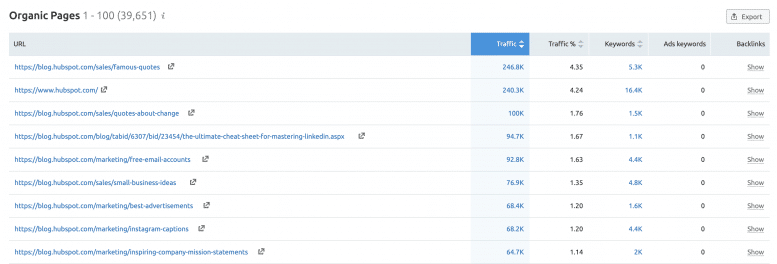
5. Conduct Keyword Research
Keywords are the fuel of SEO for SaaS companies. Finding the right keywords to use is part art and part science.
A keyword might seem to be a good fit for your SEO campaign, but if it is too competitive or doesn’t generate enough traffic, you may not want to use it to build your campaign around.
Competitive keywords are expensive to use for paid advertising. It will also be challenging to rank in the top 10 search results in organic SEO.
For instance, let’s say you sell a SaaS video content editor and you want to rank for the keyword “YouTube”.
You have over 180 million competitors since YouTube is the number one keyword in the world according to Ahrefs Top 100 Google Searches blog post.
Once you start your SEO program, you will want to track your search rankings. Google displays 10 search results per page and provides rankings for the top 100 related search terms.
You will increase your rankings as you generate more content around that keyword phrase. Every page counts, including landing pages, blog posts, and website pages. Be sure to include the keyword in your website page title at least one or two more times.
Use variations of the keyword term. Avoid keyword stuffing, which is the use of the same keyword over and over again.
Google will penalize you for this tactic. In fact, if you keyword stuff or use other prohibited strategies, Google will place you on their blacklist.
6. Generate Content to Convert Website Traffic from SEO
For a SaaS company, the most important KPI is revenue growth.
To generate revenue, you have to generate leads. But how do you do that on your website?
When your buyers are in the awareness stage of the buying cycle, they want to find a solution to their problem and turn to Google.
They find articles based on the keywords in their questions and visit the companies’ landing pages or website pages providing those answers. That’s great, but it’s not everything.
You have the audience and need to transform them into leads. To convince someone to give you their personal information, such as email, name, and company, you need to give valuable information.
That’s where Content Marketing comes in. There are many types of content, and you should merge different formats for better results. Below, you will see some of the most popular types.
Videos
YouTube, as you read earlier, is the second most popular search engine after Google. People love videos: tutorial videos, vlogs, dance videos, and music all generate lots of traffic based on keywords.
The screenshot below illustrates the value of videos and keywords. The keyword fun tutorial videos revealed a simple tutorial video that received over 515,000 views.
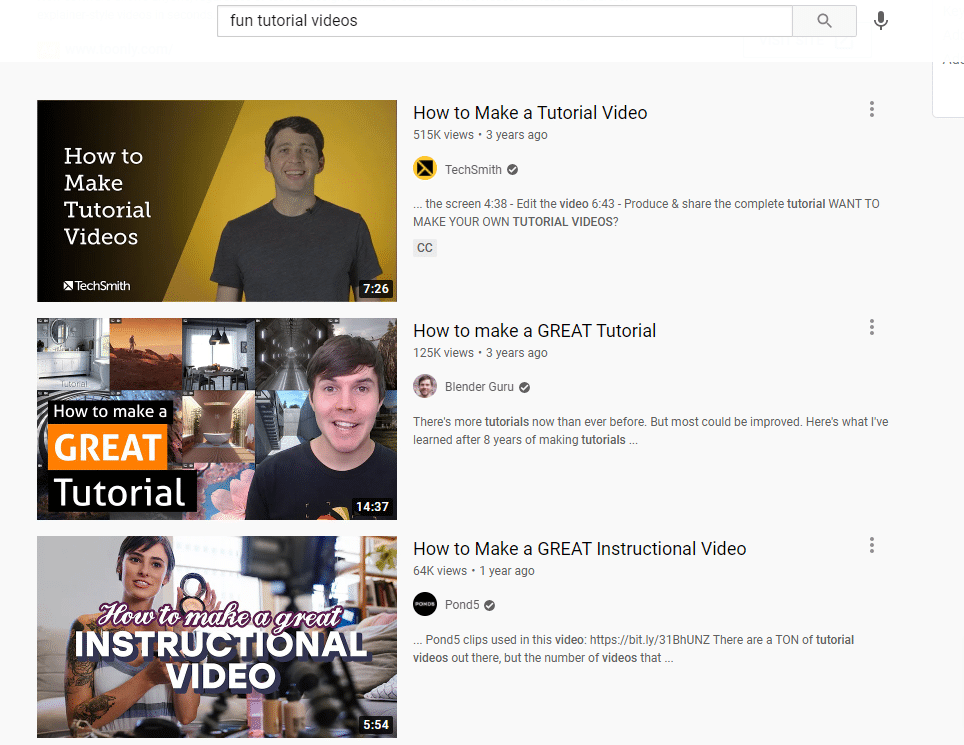
Blog Posts
People still read in short chunks. Blogs are informative and motivating. They are easy to produce, but you need to publish blogs regularly.
If you can’t do it yourself, using a Content Marketing agency will make your life easier.

Ebooks
Buyers also like to read longer documents, such as ebooks and white papers.
This longer-form content is often referred to as evergreen content since it is written to last a long time. This content provides a lot of SEO value over time and can produce results for years.
Infographics
Pictures tell stories. Infographics mix facts, numbers, and words to create exciting content. Infographics are often published with a blog post or evergreen piece to generate awareness.
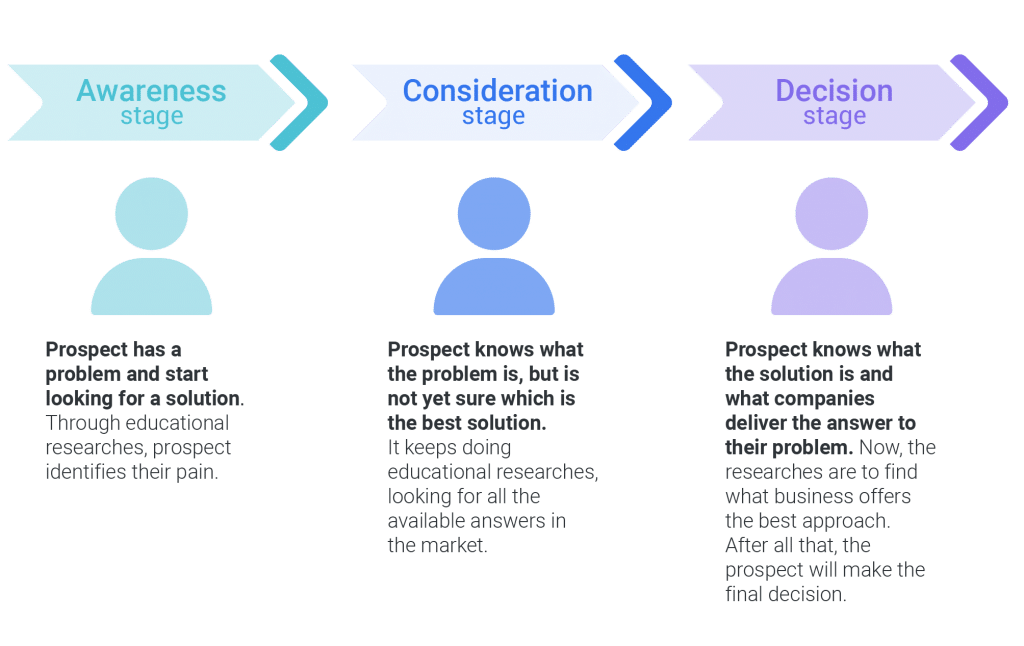
7. Write for the Reader
Google’s primary goal is to ensure that users have an enjoyable and productive search experience. They are dedicated to helping users quickly discover content that is not only relevant but also enjoyable to read.
When users initiate a search, Google’s aim is to present them with results that precisely match their needs and preferences.
In contrast, writing content solely for the purpose of appealing to search engine algorithms does not align with these user-centric criteria. Instead, content must be crafted with users in mind, ensuring that it is not only informative but also engaging and personable. This approach enhances the overall user experience, making it more enjoyable and beneficial.
Furthermore, the relevance of the content plays a crucial role in determining its ranking on search engine results pages. In this context, the term “SEO for SaaS” holds significant importance within this article.
However, keen users may have noticed that this term appears in various forms and synonyms throughout the content. This is because Google’s advanced algorithms are capable of recognizing these synonyms and variations, allowing content creators to write more naturally and in a user-friendly manner.
In summary, prioritizing user-centric content creation is key.
You can write better content with the help of our professional freelance writers. Start your WriterAccess free trial right now to find your perfect writer!
8. Link to Relevant Website Pages
Your content must be well-written and come from a respected source. Providing links within your article to other resources creates respect from readers.
The key is to provide links to other website pages within your website. These internal links increase your SEO on-page.
The second factor is to link to credible external resources. You want to avoid linking to competitive websites or websites where you cannot verify the author.
9. Measure Your SEO Results
Remember our discussion on KPIs and metrics?
You need to prove to your boss or client that your SEO program is generating results. Measuring your KPIs like website traffic, clicks, and leads provides the evidence you need to keep your program funded.
Compiling those leads in a central location makes it easier to view progress. You can use SEO software, a marketing automation platform, or an analytics application.
Using a SaaS software solution means your statistics are updated in real time, providing instant feedback.
10. Analyze and Revise the Strategy
It is important to pay attention to your metrics and not resist change. Experimentation is vital for improving SEO results.
Over time your SEO results will improve if you continually monitor and adjust your keyword terms and add new content.
Conduct periodic review sessions with your content and SEO team and brainstorm new keyword terms and topics. Pay attention to what customers and prospects are asking in their email and social media communications.
Do not create it and forget it. You will lose momentum and all of your efforts will be wasted.
Organic SEO is a powerful tool and it takes time to build a robust Inbound Marketing program. Your efforts will be rewarded by keeping your program up-to-date.
Wrap Up
As you can see, SEO for SaaS is a complex topic to understand. You need to understand your buyer’s needs and challenges, how your product and service are unique, and find ways to get your content found on the internet.
The SaaS environment is very competitive — Search Engine Optimization is no exception. Developing buyer personas, creating quality content relevant to your buyers in the awareness stage, and using forms to convert those buyers into leads will be essential for your lead generation program.
Remember, you need to be patient and persistent. Organic SEO programs take time to build and generate leads.
You will need a constant stream of blog posts to attract your buyers. Most importantly, set goals and KPIs and measure results so you can constantly improve the process.
If you follow these steps, you are on your way to a successful and cost-effective SEO program for your SaaS company.
If you want to take the next step, and leverage your strategy, take our SEO Maturity Assessment and identify where to focus efforts to evolve to the next stage on the maturity curve!
